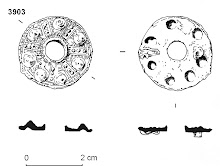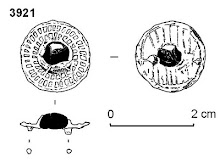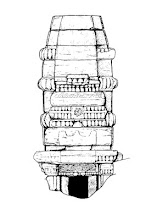Urban Archaeology is planning a new series of illustrated factsheets
on common London artefacts and has submitted an application for a grant to cover
the cost of research, writing and production.
The factsheets will be illustrated ‘spotter’s guides’ to
each class of find, with a brief text on the artefact class, illustrated
examples, common identification features, date ranges, and further reading. The
information will be pitched at a level suitable for both professional Diggers
and the interested amateur archaeologist or student. The factsheets will be
published online as free pdf downloads and will be available as A2 posters and as A4 factsheets. Work on the initial
series of factsheets will be completed next year, with planned factsheets
including London clay tobacco pipes, medieval and post-medieval pottery, and
ceramic building material.
Urban Archaeology believes that these factsheets will help
archaeologists in the basic identification of artefacts, will expand their
knowledge of those finds, and will hopefully encourage further interest in
finds and their study. The factsheets will hopefully prove invaluable to a wide
range of archaeologists, from Diggers wanting to know more about the artefacts
they are digging up, to members of the public eager to identify finds seen on
the Thames Foreshore. The publication of the factsheets on the web will mean
that they can be accessed at the point of need, via a smartphone or computer,
as well as printed out for display in site huts, processing areas, for use as
training and educational material, and for individual use. Urban Archaeology
plans to expand the series over the coming years and hopes to develop
factsheets on a broad range of archaeological subjects.














